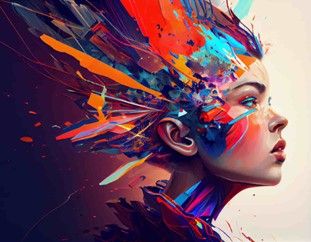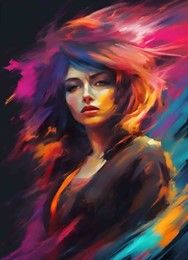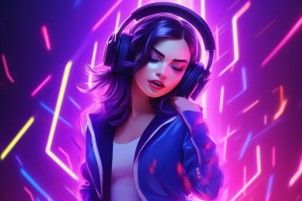Introduction to AI in Art

The development of AI in visual art as a field is quite fascinating and has its origins in the middle of the last century. One of those events was Harold Cohen's effort to create a program called AARON, an autonomous drawing devise, in the early 1970s. At a lighter note, it’s not the end of our civilization, rather the beginning of an age of man’s absolute controlled creations in images and in this Allows any vision to come alive thanks to the development of such technologies as machine’s learning and Artificial Intelligence Nowadays. It creates an optimistic outlook for the future of art with the dawn of new technology where everything is possible.
Overview of How AI is Used to Create Various Art Forms:
When it comes to music, AI algorithms analyze patterns found in a wide range of musical compositions. Through this deep understanding, they can craft original pieces that span various styles and genres, bringing new harmonies and melodies to life.
Literature has also been transformed by AI advancements. Sophisticated models such as GPT-3 have shown an impressive ability to generate poetry, stories, and other forms of writing that capture human-like nuances in style and theme, blending the essence of classic and modern prose.
Literature has also been transformed by AI advancements. Sophisticated models such as GPT-3 have shown an impressive ability to generate poetry, stories, and other forms of writing that capture human-like nuances in style and theme, blending the essence of classic and modern prose.
Even the performing arts have embraced AI’s potential. Choreographers and playwrights have begun using AI to design dance routines and scripts, while live performances are enhanced through interactive elements powered by AI, adding an engaging and futuristic touch to theater and dance.
AI in Visual Art

Artificial Intelligence has been making waves in visual art, producing captivating and sometimes surprising pieces. Some notable examples include:
Edmond de Belamy: A portrait from 2018 created with an algorithmic art process called Generative Adversarial Networks (GANs) which gained attention after it got auctioned.
Edmond de Belamy: A portrait from 2018 created with an algorithmic art process called Generative Adversarial Networks (GANs) which gained attention after it got auctioned.
AI Illustrations: These are artworks which e.g. Van Gogh or Picasso are the sources of inspiration, employing the styles of those great painters together with other modern ideas.
Which AI tools are best for creating paintings?
Step-by-Step Guide for Students to Create Their AI-Generated Artwork
The first step in creating AI-generated art is to choose the right tool. Options like DeepArt, Artbreeder, and DALL-E offer unique features tailored to different creative needs. With your tool selected, you can dive into the next phase: uploading or generating inputs.
If you’re using DeepArt, start by uploading a photo you wish to transform, applying an artistic style that resonates with your vision. For Artbreeder, pick a base image and manipulate its characteristics using sliders, adjusting attributes such as color, texture, or even the blending of multiple elements. DALL-E, on the other hand, invites you to harness your imagination—simply type a descriptive prompt and watch as the platform generates an entirely original image.
Once your initial input is set, it’s time to customize and experiment. This is where creativity truly flourishes. Try out different styles, tweak various parameters, and blend images to see how each change shapes the outcome.
How can students start their own AI art projects?
AI in Music:

Tools and Platforms:
Tutorial for Students to Create Their AI-Composed Music Pieces:



